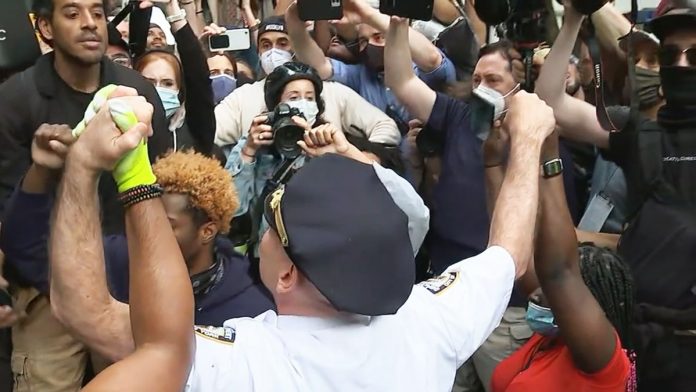As people across Canada and in the U.S. march and speak out against racism — many pictured standing shoulder-to-shoulder — healthcare workers are concerned about the possible spread of COVID-19.
Zain Ismail, who works as an administrative healthcare worker in Detroit, said he’ll be watching to see a spike in cases in the coming weeks.
“Coronavirus has not gone away,” he said. “It may not dominate the news anymore, but it’s still there. It’s still alive. It’s still active.
He added if these rallies expand and cases breakout, it could overwhelm healthcare workers.
“It’s concerning to me that we now have these demonstrations to deal with — mind you, they’re valid demonstrations. I don’t want to refute why people are protesting — but it’s now adding this extra layer of things to worry and care about while we’re also still trying to get us through this pandemic,” he said.
Ismail said if these rallies do prove to be harmful in relation to COVID-19, it could prompt different levels of government to shut them down.
He also said he noticed some people wearing masks, while others do not.
Dr. Isaac Bogoch, an infectious disease specialist and researcher based at Toronto General Hospital, echoes Ismail’s sentiment.
People tightly packed together
Bogosh said he’s concerned from a medical perspective after seeing images of people tightly packed together, “especially in the context of an epidemic that’s hitting many parts of the United States hard.”
“You see thousands of people. You see them very, very close together. Many of whom are not wearing masks,” he said. “If someone who had the infection in one of those protests, that individual could certainly transmit it to other people.”
Bogosh said he’s seen pictures of people wearing protective gear and spreading apart from one another, which he considers helpful.
Symptoms can be developed as early as two to three days after an exposure, according to Bogosh, who urges anyone with developing symptoms to get tested.
Concurrently, Ismail urges rally-goers to practice physical distancing and wear gloves and masks to prevent the spread of the virus at these “high transmission events.”
































